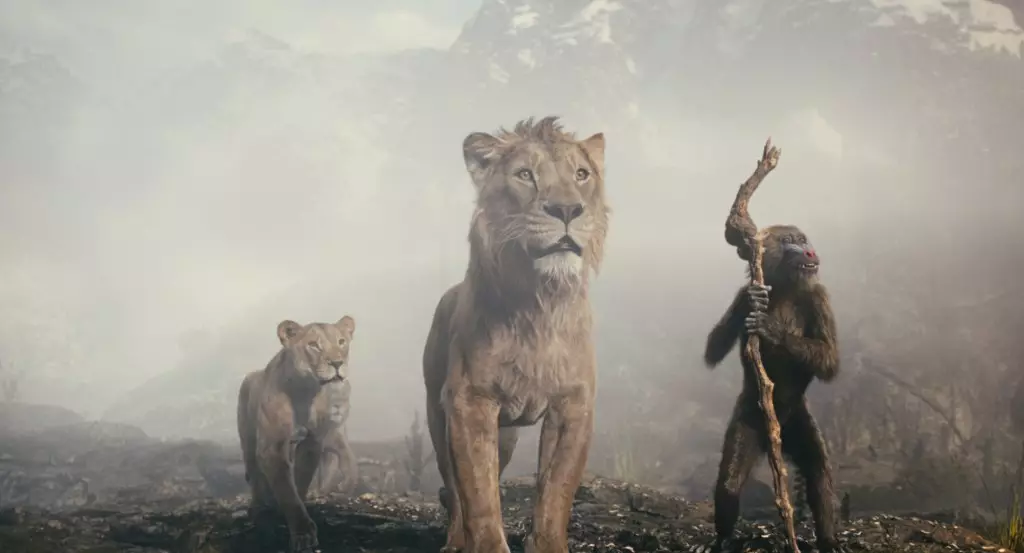The cinematic landscape often witnesses the rise and fall of various theatrical releases, and 2023 was no exception. Among the notable contenders this year, Disney’s “Mufasa: The Lion King” and Paramount’s “Sonic the Hedgehog 3” fashioned themselves as two lionhearted competitors at the box office. Despite the optimistic expectations surrounding Mufasa, its debut was eclipsed by the blue blur, prompting a deeper look into how box office dynamics and release strategies can influence long-term performance.
Opening weekend statistics reveal the competitive nature of the film industry, particularly for family-oriented animated features. With “Mufasa” earning $35.4 million domestically in its opening weekend, it was left trailing behind “Sonic the Hedgehog 3,” which surged to an impressive $60 million. However, evaluating raw box office numbers without context can be misleading. Fast forward 45 days, and the tables had turned somewhat. As both films reached the end of their initial runs, “Mufasa” stood at a cumulative total of $229.5 million compared to Sonic’s slightly higher $230.5 million. This incremental upward trajectory for Mufasa speaks to a crucial factor: longevity in the market.
The Power of Theatrical Windows
A major highlight in the unfolding story of “Mufasa” was Disney’s strategic decision to implement a longer theatrical window, culminating in a 60-day exclusivity period before releasing the film on premium video-on-demand (PVOD) platforms. This approach paid dividends, enabling “Mufasa” to maintain its presence on premium large format screens like IMAX, which are pivotal for garnering premium ticket prices and sustaining audience interest. The contrast with “Sonic the Hedgehog 3” is significant, as it opted for a quicker route to PVOD, launching just 32 days post-release. The implications of these release strategies are noteworthy: while immediate returns may be enticing, nurturing a film’s theatrical run can cultivate a dedicated viewer base that returns for repeat viewings.
The Home Entertainment Landscape
As the cinematic journey continues beyond theaters, “Mufasa” announced its entry into the home entertainment realm, set to make its PVOD debut on February 18. Retail platforms like Amazon Prime Video and Apple TV will offer audiences the chance to relive the cinematic experience from the comfort of their homes. In contrast, “Sonic the Hedgehog 3” already began its home viewing options on January 21. As each film transitions to digital formats, it raises questions about viewer engagement and how additional content can favor one release over the other.
The enriching features accompanying “Mufasa’s” forthcoming Blu-ray and DVD releases stand out, notably including a full-length sing-along version, behind-the-scenes making-of content, and engaging deleted scenes. These offerings not only enhance the viewing experience but also deepen the narrative engagement by allowing audiences to explore the artistry behind the film’s production and the composer Lin-Manuel Miranda’s musical contributions.
Globally, “Mufasa” has amassed approximately $652 million, a commendable feat, especially when contrasted with “Sonic the Hedgehog 3’s” $462.5 million worldwide gross. While neither film achieved the monumental success of 2019’s “The Lion King,” which grossed $1.66 billion, it’s crucial to assess each film’s profitability in relation to production costs. “Mufasa,” despite a hefty budget of $200 million, aligned its financial prospects with Disney’s established brand equity. In turn, this translates to a sustainable pathway for future projects.
Ultimately, the rivalry between “Mufasa” and “Sonic the Hedgehog 3” is more than a mere box office battle; it reflects a larger cultural engagement with narratives that resonate across generations. “Mufasa” not only revisits beloved characters but also aligns with contemporary themes of conservation through its partnership with the Lion Recovery Fund. The film’s commitment to protecting wildlife offers audiences an emotional connection that transcends typical animation fare, positioning it not just as a cinematic experience but as a call to action.
As Mufasa’s storyline continues to unfold, it leaves audiences eager for more adventures, underscoring the importance of storytelling and emotional resonance in an ever-evolving cinematic landscape. In the end, both films present valuable case studies in modern filmmaking, audience engagement, and the art of sustaining a cinematic legacy.
